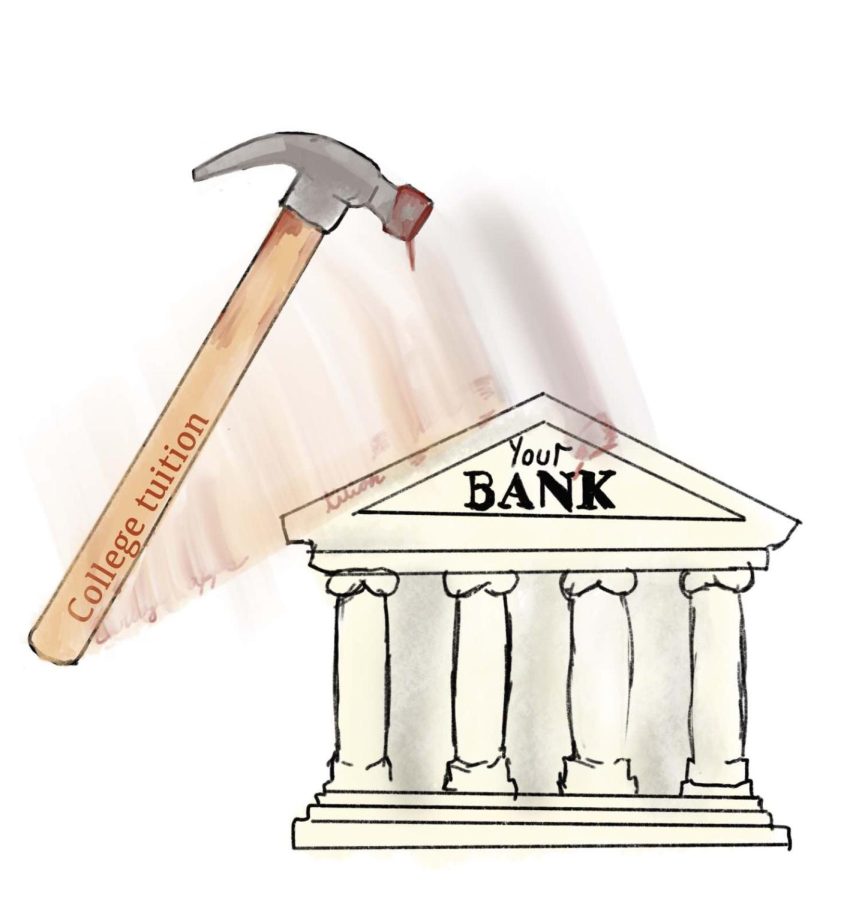Counterpoint: Is Free College For All a Viable Future or Pipe Dream?
February 25, 2022
Anything that is “free” sounds great in theory. Goods and services being received, or needs being met without the beneficiary having to lift a finger would make anyone happy. The issue with “free” lies in how to make that dream a reality. Many times, these plans can cause serious consequences for the economy and society as a whole. As parents tell their kids, “If it sounds too good to be true, it probably is.” Unfortunately, free college for everyone while ensuring a quality education sounds too good.
Democratic Senator Bernie Sanders brought the idea of free college to the political foreground during his 2016 presidential campaign. Since then, many proposals have been brought forward to make college free or more affordable for students and cancel student debt, all 1.7 trillion dollars of it. According to CNBC, the most recent plan is a tax on Wall Street trading, and having the federal government pay for 75 percent and states pay for 25 percent of tuition to four year universities for students. In addition, it would make community college and trade schools free for all students (cnbc.com).
This sounds great on paper or in a campaign speech, but the “how” to get the plan accomplished is where the problem lies. First off, the United States’ national debt is currently over 30 trillion dollars, according to the US Treasury. Is a plan that would cost way more than 1.7 trillion dollars really feasible? All that plan would do is increase the likelihood that the United States would default on our debt leading to disastrous consequences (usdebtclock.org).
Secondly, what if an economic recession occurs and the stock market drops? Would Americans suddenly be forced to drop out of college, which would just worsen the situation? A tax on the stock market would also have the possibility of affecting many middle-class families. Many people use the stock market as a way to make money to put toward retirement or to save for potential future medical needs. A study found that the tax would cost between 13 and 35 dollars a year for the average American. It doesn’t sound bad when it’s put that way, but over 40 years it would cost the average American 1,400 dollars. That could be the cost of a visit to urgent care and possibly life saving medical attention, according to UCSD Emergency Medical Physician Ian Grover. Thus you are spending money for the privilege of spending more money on companies trying to make enough money to make a profit (cnbc.com).
The current system may not be perfect, but it does a fair job of providing for students who qualify for need-based financial aid. According to a college aid calculator, the money a student from a 150,000 dollar income family (free college plan wants to make college free for students from families under 120,000 dollars) would be responsible for paying if they were going to an in-state school with 65,000 dollar tuition is 15,000 dollars. This is before considering merit-based or application scholarships. This plan is risking the United States’ economy to look out for a group of students that are already accounted for under the existing system (savingforcollege.com).
Finally, there’s the fact that if something is free it has the possibility of being taken for granted. If public high school is any indication, with free education, students would not regard college as a privilege and opportunity and there would be fewer ways for students to be held accountable. Students don’t want to sit in a room with six other classes while they do nothing pertaining to what they are supposed to be learning, which was sadly the case sometimes in high school when they go to college. You have to have some skin in the game. Nowadays, you are held accountable because you sacrifice to go to college, and it is your money you are wasting if you don’t take higher education seriously. AP Government Teacher Jonathan Schiller stated that when college was free at all University of California schools (which occurred at its inception), and even when it was relatively cheap, years later, the dropout rate was much higher. “[The colleges] used to say during orientation, ‘look to your right and left, those people probably won’t be there when you graduate,’” Schiller said.
Free college isn’t economically viable. This idea seeks to support a group of people that are supported just fine under the current system, and would fail to hold students accountable for their studies. Not to mention that the quality of education would undoubtedly suffer because the federal government would look to save money at the expense of students.



